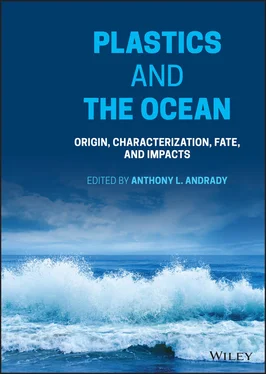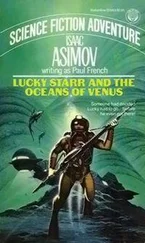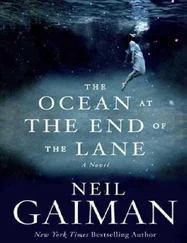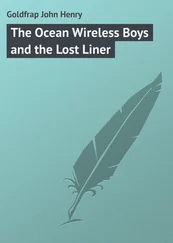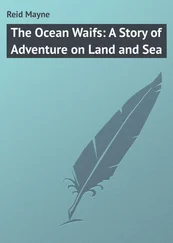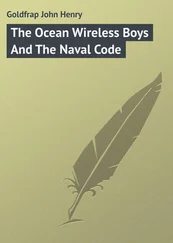Plastics and the Ocean
Здесь есть возможность читать онлайн «Plastics and the Ocean» — ознакомительный отрывок электронной книги совершенно бесплатно, а после прочтения отрывка купить полную версию. В некоторых случаях можно слушать аудио, скачать через торрент в формате fb2 и присутствует краткое содержание. Жанр: unrecognised, на английском языке. Описание произведения, (предисловие) а так же отзывы посетителей доступны на портале библиотеки ЛибКат.
- Название:Plastics and the Ocean
- Автор:
- Жанр:
- Год:неизвестен
- ISBN:нет данных
- Рейтинг книги:5 / 5. Голосов: 1
-
Избранное:Добавить в избранное
- Отзывы:
-
Ваша оценка:
- 100
- 1
- 2
- 3
- 4
- 5
Plastics and the Ocean: краткое содержание, описание и аннотация
Предлагаем к чтению аннотацию, описание, краткое содержание или предисловие (зависит от того, что написал сам автор книги «Plastics and the Ocean»). Если вы не нашли необходимую информацию о книге — напишите в комментариях, мы постараемся отыскать её.
Plastics and the Ocean
Plastics and the Ocean
Plastics and the Ocean — читать онлайн ознакомительный отрывок
Ниже представлен текст книги, разбитый по страницам. Система сохранения места последней прочитанной страницы, позволяет с удобством читать онлайн бесплатно книгу «Plastics and the Ocean», без необходимости каждый раз заново искать на чём Вы остановились. Поставьте закладку, и сможете в любой момент перейти на страницу, на которой закончили чтение.
Интервал:
Закладка:
Ed Carpenter, the first scholar to characterize floating marine plastics in the “good” peer‐reviewed literature, (Science 1972), recognized potential problems associated with plastics in the ocean, such as their ability to sorb PCBs, and then be ingested by marine animals due to their ability to mimic natural prey, but he let the subject lapse after getting pressure from the Society of the Plastics Industry, leading him to wonder if his position as a marine biologist at Woods Hole might be placed in jeopardy by the industry complaining to his superiors. (Plastisphere Interview) Another paper published in a “good” journal, Nature, in 1974 by Wong et al. looked at “Quantitative Tar and Plastic Waste Distributions in the Pacific Ocean.” The surface tows done for this study were conducted during the 1972 San Francisco to Honolulu Transpac sail race and would have avoided areas of light winds where debris concentrations may have been higher.
The initial response of the plastic industry to environmental plastic pollution was to consider plastic “litter” merely an aesthetic problem. After Carpenter’s papers were published in Science, and Wong’s in Nature, W.C. Ferguson, a member of the Council of the British Plastics Federation and a fellow of the Plastics Institute stated that “Plastics litter is a very small proportion of all litter and causes no harm to the environment except as an eyesore.” This may still be the general public’s attitude. Their nearly constant contact with the material, its lack of taste, smell, and obvious physical effects, have led most people to consider consumer plastics inert. If it were harmful in any way, why would it be used for our clothing, our home furnishings, and to serve and contain our food?
The need for a volume on plastics and the ocean before a volume on plastics in the soil or the air, or even in earth orbit, arises from the fact that the land we live on slopes down to the sea and grav‐ ity, coupled with wind and rain results in the ocean being the first receiving body to absorb massive amounts of vagrant plastics. The first plastics found by ocean scientists were a mix of discarded plastic consumer objects, but also pre‐production plastic resin beads that came to be known as nurdles , the form that thermoplastic resin raw material is shipped to “converters,” as the fabrica‐ tors of plastic objects for the marketplace are known. These pellets showed up in the bellies of seabirds and in small mesh nets towed mostly at the ocean surface. In the decade following Carpenter’s paper, larger objects came to be noticed and spawned the National Atmospheric and Oceanographic Administration (NOAA) international marine debris conferences. The early conferences focused primarily on derelict fishing gear as indisputable harm was being done to ships by blockage of intake ports and entanglement around propellers and drive shafts. To try to stop derelict nets and lines from being caught in propellers, several companies developed knives that could be attached to driveshafts to cut these lines as they wound around them. This fouling with debris had been a rare problem for vessels before the age of plastic, but as the age progressed, and less expensive and more persistent plastic fishing nets and lines proliferated, entanglement increased, and with its high cost to remedy, interest in tracking concentrations of this material became a new focus. Increasing reports appeared on derelict nets and fishing gear killing thousands of marine mammals through entanglement. This led to an interest in observing and recording the occurrence of floating marine debris. In 1987, two NOAA scientists at the National Marine Fisheries Service Auke Bay Laboratory, Steve Ignell and James Seger, prepared a paper on methods for observing debris using line transects of vessels in transit. It was apparent to the authors that sunlight reflected by wavelets or “glare” would be “the most important single environmental factor affecting the sighting probability…” The paper was never submitted, probably because “Extensive analyses of sighting probabilities relating distance, wave height, and light conditions to type, sizes, and colors of marine debris will be needed to incorporate these data into debris estimation procedures.” (Manuscript provided by Steve Ignell). The year before, Ignell had written another paper with Day and Clausen that emanated from the Auke Bay, AK laboratory entitled: “Distribution and Density of Plastic Particulates in the North Pacific Ocean in 1986.” This paper preceded a more comprehensive study by Day, Shaw, and Ignell in 1990, “The quantitative distribution and characteristics of neuston plastic in the North Pacific Ocean, 1985–1989,” published in the proceedings of the Second International Conference on Marine Debris in 1989. Plastic particulates were becoming more interesting, but the term “microplastics” was not yet used.
Surface drift up to this time had been in large part focused on the transport of fish eggs and larvae, especially those of commercially important species like salmon. James Ingraham Jr. had developed the Ocean Surface Current Simulator (OSCURS) for this purpose while working for NOAA in the Pacific Northwest. Collaborating with oceanographer Curtis Ebbesmeyer, he was able to adapt this simulator to track a container spill of Nike sneakers and predict where they would wash ashore on the West Coast. He expanded on this work to focus on North Pacific accumulation zones and presented his findings in the year 2000 at the 4th International Marine Debris Conference in Honolulu. The results showed two major areas of drifter accumulation: (i) off southern Japan, which has come to be known as the Western Garbage Patch and (ii) the middle of the eastern North Pacific which has come to be known as the Great Pacific Garbage Patch. The work by Day and colleagues never focused on the east‐central North Pacific. When I crossed the area in 1997, I was impressed by the abundance of floating plastics. Two years later, I returned and sampled the area, finding three times the abundance and seven times the weight of the highest concentrations per km 2found by Day a decade earlier in the western Pacific. In order to assess the potential for ingestion of plastics by open ocean filter feeders, we compared the abundance and mass of the zooplankton caught to that of the plastic in our manta trawls. We found the number of zooplankton was five times greater than the number of plastic pieces >0.3mm in diameter, but the weight of the plastic was six times greater than the zooplankton. We published our findings in Marine Pollution Bulletin (42,12, 2001). This finding was shocking and controversial, but to have more plastic than life anywhere in the ocean, no matter how you look at it, was explosive. Another important paper linking floating plastics to absorption of persistent organic pollutants was published the same year by Mato and Takada et al., “Plastic resin pellets as a transport medium for toxic chemicals in the marine environment.” They found the pellets could sorb hydrophobic pollutants up to one million times their level in the surrounding seawater. This gave credence to the description of small ocean plastics as “poison pills” for marine creatures.
Of course, during these developments, the plastic industry and its professional organizations were becoming aware of calls to label plastic waste in the environment as pollution. I was invited to speak at a meeting of the Southern California Film Extruders and Converters Association and was introduced to an industry response that focused on making plastic waste “disappear” using an “OxoDegradable” plastic additive. There were two benefits promoted by the producer of the OxoDegradable additive. The first was that it would accelerate the breakdown of the polymer chain, minimizing the risk of entanglement, such as was seen to occur with plastic six‐pack rings used to hold canned beverages. When discarded into the marine environment, they had been photographed choking several species. The second supposed benefit of the additive was more rapid biodegradation. The idea was that no matter how slowly, plastic polymers will undergo some biodegradation in the environment, and this process could be accelerated by mixing fragmenting agents into plastics to make them smaller. Although oxo additives did not themselves improve biodegradation, the fact that they produced smaller pieces of plastic suggested that they would disappear sooner through greater exposure per unit of mass to biodegradation organisms. A representative of the company was showing a jar of soil with fragmented plastics to make his point. However, when asked to produce proof of final degradation, none was forthcoming. This did not stop the company from telling its customers to label their plastic products biodegradable if they contained oxo‐degradable additives. Experiments with the six‐pack rings showed OxoDegradable additives to be ineffective in the cold, wet environment of the ocean, making their effectiveness in preventing entanglement questionable.
Читать дальшеИнтервал:
Закладка:
Похожие книги на «Plastics and the Ocean»
Представляем Вашему вниманию похожие книги на «Plastics and the Ocean» списком для выбора. Мы отобрали схожую по названию и смыслу литературу в надежде предоставить читателям больше вариантов отыскать новые, интересные, ещё непрочитанные произведения.
Обсуждение, отзывы о книге «Plastics and the Ocean» и просто собственные мнения читателей. Оставьте ваши комментарии, напишите, что Вы думаете о произведении, его смысле или главных героях. Укажите что конкретно понравилось, а что нет, и почему Вы так считаете.
